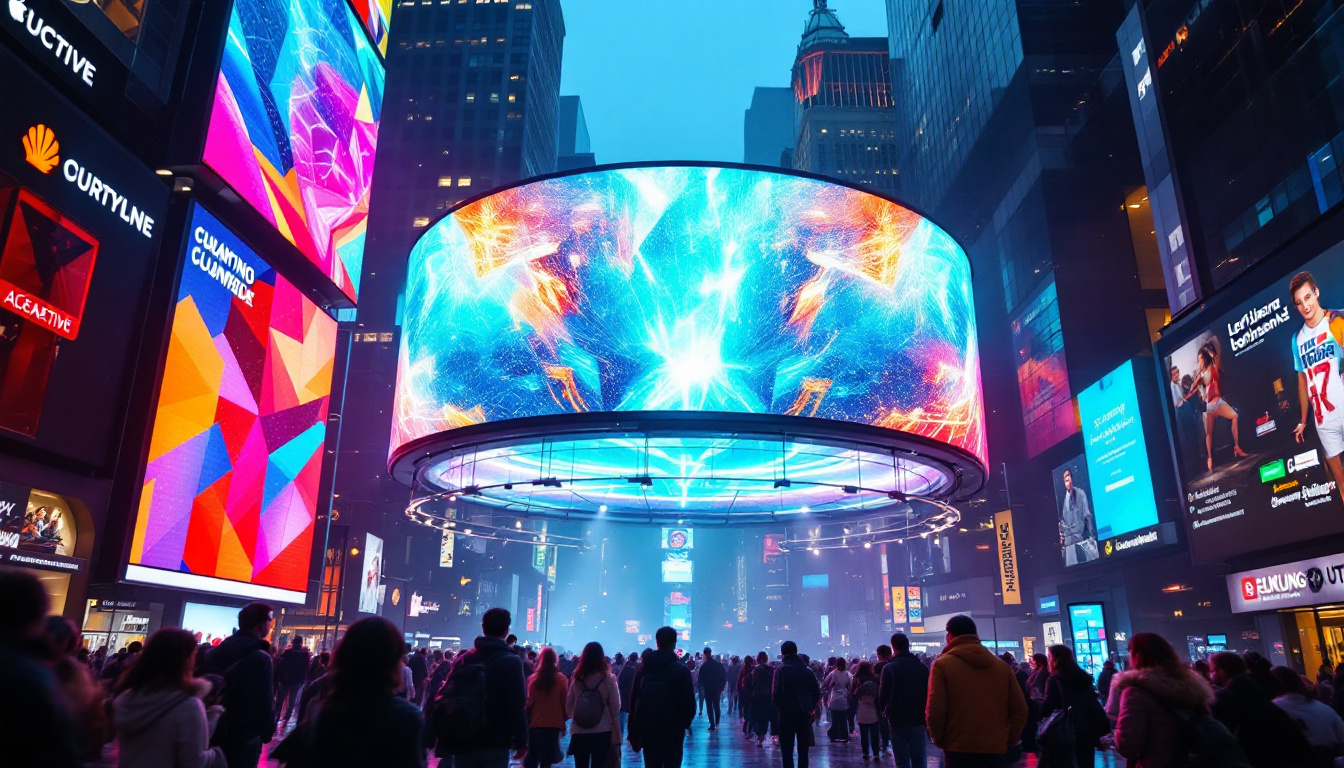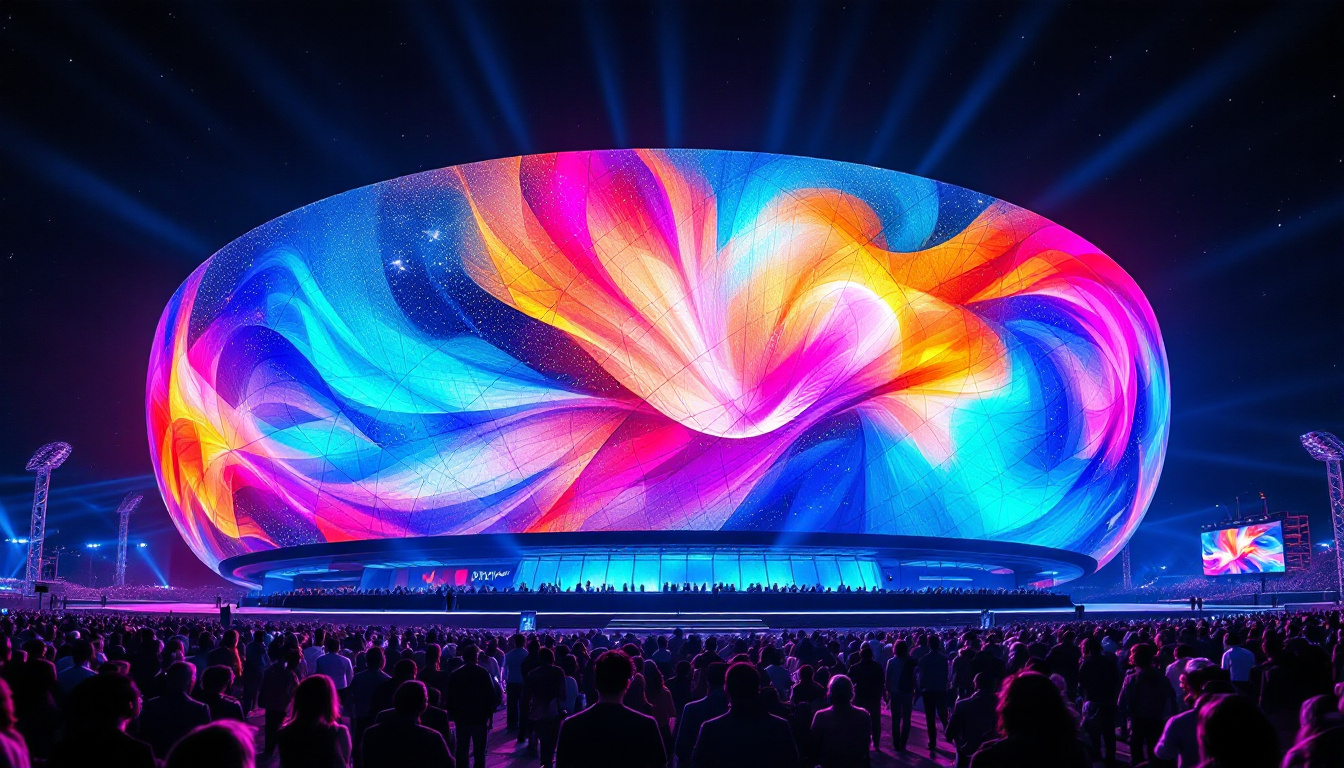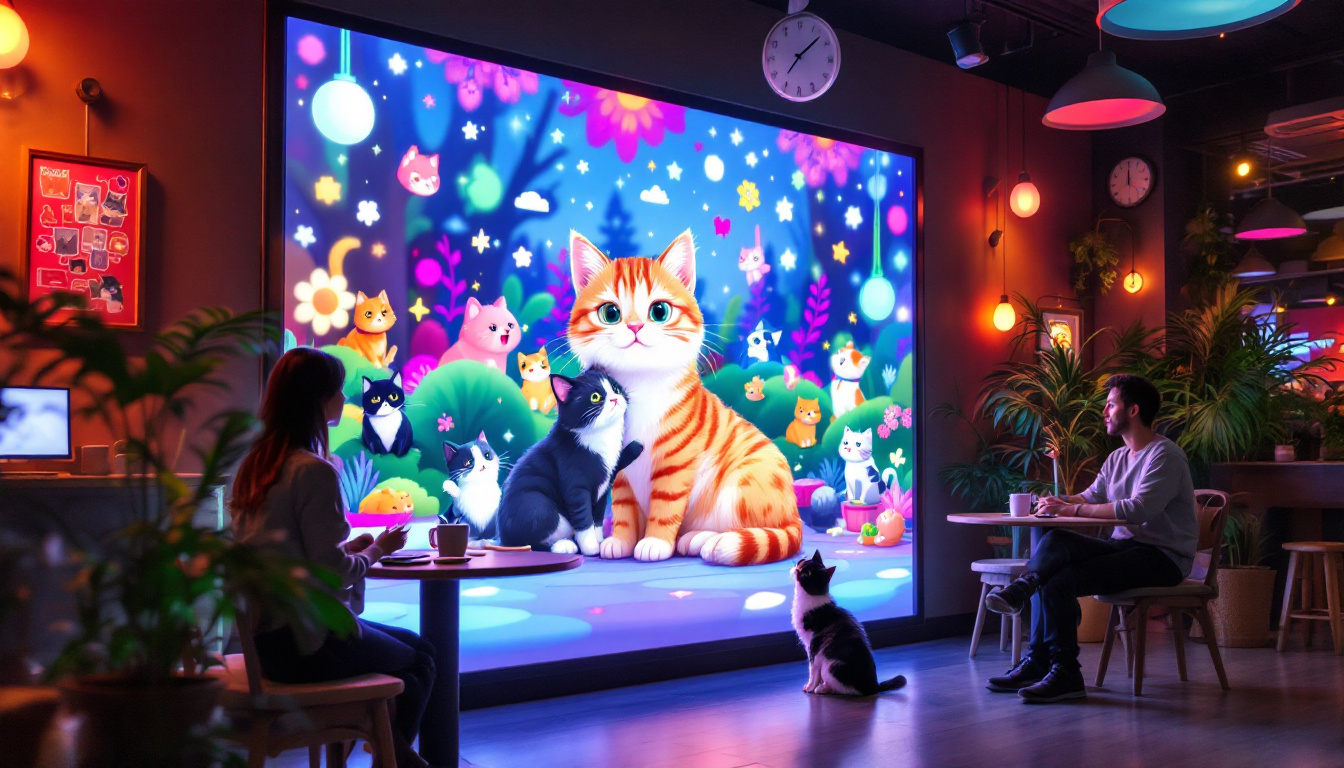In today’s fast-paced world, airports have become bustling hubs of activity, serving millions of passengers each day. To manage this flow of travelers efficiently, airports rely heavily on technology, particularly LED displays. These screens are not just decorative; they play a crucial role in providing real-time information and enhancing the overall travel experience. This article delves into the intricacies of LED displays at airports, exploring their functionality, benefits, and the technology behind them.
Understanding LED Displays
LED, or Light Emitting Diode, displays are a type of electronic display that utilizes light-emitting diodes to produce images and text. Unlike traditional LCD screens, LED displays offer superior brightness, contrast, and energy efficiency. This makes them particularly suitable for environments like airports, where visibility and clarity are paramount. The ability to maintain high visibility even in brightly lit environments ensures that passengers can easily read important information, enhancing their overall travel experience.
How LED Displays Work
The fundamental principle behind LED displays is relatively simple. Each pixel on the screen is made up of red, green, and blue diodes. By adjusting the intensity of these three colors, a wide spectrum of colors can be produced, allowing for vibrant and dynamic visuals. This capability is essential in an airport setting, where information must be communicated quickly and clearly. Additionally, LED displays can refresh at a much faster rate than traditional screens, which is crucial for displaying rapidly changing flight information without blurring or ghosting.
Moreover, the modular nature of LED technology allows for various screen sizes and configurations. From large video walls in terminals to smaller information boards, LED displays can be tailored to meet the specific needs of different areas within an airport. This flexibility not only enhances the aesthetic appeal of the space but also allows for strategic placement to maximize visibility from multiple angles, ensuring that all passengers can easily access the information they need.
Types of LED Displays in Airports
Airports utilize various types of LED displays, each serving distinct purposes. The most common types include:
- Flight Information Displays (FIDs): These screens provide real-time updates on flight arrivals, departures, delays, and gate changes. They are typically found in terminals and concourses.
- Wayfinding Displays: These interactive screens help passengers navigate the airport, showing maps, directions, and points of interest.
- advertising displays: Airports often use LED screens for advertising, showcasing promotions and services available within the airport.
In addition to these common types, some airports are beginning to experiment with more advanced LED technologies, such as transparent LED displays and flexible LED screens. Transparent displays can be integrated into windows or partitions, allowing for advertising or information to be visible without obstructing views. Flexible screens, on the other hand, can be bent or shaped to fit unconventional spaces, providing even more creative possibilities for display placement. These innovations not only enhance the passenger experience but also open new avenues for revenue generation through advertising and branding opportunities.
The Benefits of LED Displays
LED displays offer a multitude of advantages that make them the preferred choice for airports around the globe. These benefits extend beyond mere aesthetics, impacting functionality, efficiency, and passenger experience.
Enhanced Visibility
One of the most significant advantages of LED displays is their exceptional visibility. The high brightness levels ensure that information is easily readable, even in bright ambient light conditions typical of airport environments. This is particularly important for FIDs, where passengers need to quickly absorb information about their flights. Furthermore, the vibrant colors and sharp contrast of LED displays enhance the clarity of the information presented, allowing for quicker decision-making by travelers. This is especially crucial during peak travel times when crowds can lead to confusion and anxiety among passengers.
Energy Efficiency
LED technology is known for its energy efficiency. Compared to traditional display technologies, LED screens consume significantly less power, which can lead to substantial cost savings for airports. This aspect is increasingly important as airports strive to reduce their carbon footprint and operate more sustainably. In addition, the reduced energy consumption translates into lower operational costs, allowing funds to be redirected towards other critical areas such as customer service enhancements or infrastructure improvements. As airports continue to adopt green technologies, LED displays stand out as a key component in their sustainability initiatives.
Durability and Longevity
LED displays are built to last. They are more resistant to environmental factors such as temperature fluctuations and humidity, making them ideal for the often variable conditions found in airports. Additionally, their long lifespan reduces the need for frequent replacements, further contributing to cost-effectiveness. This durability is complemented by their resistance to shock and vibration, which is particularly beneficial in high-traffic areas where physical impacts are common. The robust nature of LED technology ensures that airports can maintain a consistent flow of information without the disruptions caused by malfunctioning displays, thereby enhancing overall operational efficiency.
Versatility in Application
Another compelling benefit of LED displays is their versatility in application. These displays can be utilized for a wide range of purposes, from flight information displays to advertising and wayfinding solutions. Airports can easily customize content to suit various needs, whether it’s providing real-time updates on flight statuses or showcasing promotional materials for shops and services within the terminal. This flexibility not only maximizes the utility of the displays but also allows for dynamic content that can engage passengers and enhance their overall experience. Furthermore, with advancements in technology, LED displays can now integrate with mobile applications, enabling travelers to receive personalized notifications directly on their devices, thus streamlining their journey through the airport.
The Role of LED Displays in Passenger Experience
In an era where customer experience is paramount, airports are leveraging LED displays to enhance the travel experience for passengers. These screens do more than just display information; they create an environment that is informative, engaging, and user-friendly.
Real-Time Information
Passengers rely on timely information to make informed decisions about their travel. LED displays provide real-time updates on flight statuses, ensuring that travelers are aware of any changes that may affect their journey. This transparency reduces anxiety and helps passengers manage their time effectively.
Interactive Features
Many airports are integrating interactive LED displays that allow passengers to access additional information. These screens can provide details about airport amenities, dining options, and shopping opportunities. By offering interactive maps and wayfinding features, airports can significantly improve the navigation experience for travelers.
Engagement and Entertainment
Beyond functional information, LED displays can also serve as a source of entertainment. Airports often use these screens to showcase art, cultural exhibits, or live feeds from events happening within the airport. This not only enriches the passenger experience but also creates a sense of place and community.
Technological Innovations in LED Displays
The technology behind LED displays is continually evolving, leading to innovative solutions that enhance their functionality and application in airports. These advancements are paving the way for smarter, more efficient airport operations.
Smart Displays
With the advent of smart technology, LED displays are becoming increasingly integrated with data analytics and artificial intelligence. Smart displays can analyze passenger flow and adjust the information presented based on real-time data. For instance, during peak travel times, these displays can prioritize critical flight information to ensure that passengers receive the most relevant updates.
Integration with Mobile Technology
As mobile technology continues to advance, airports are finding ways to integrate LED displays with passengers’ smartphones. This integration allows travelers to receive personalized information directly on their devices, such as boarding notifications or gate changes, enhancing the overall travel experience.
Improved Content Management Systems
Modern content management systems (CMS) have revolutionized how airports manage the information displayed on LED screens. These systems allow for real-time updates, remote management, and the ability to schedule content in advance. This flexibility ensures that the information displayed is always current and relevant, improving operational efficiency.
Challenges and Considerations
While LED displays offer numerous benefits, there are also challenges and considerations that airports must address when implementing this technology. Understanding these challenges can help ensure successful deployment and operation.
Initial Investment Costs
The initial investment for LED display technology can be significant. Airports must consider not only the cost of the displays themselves but also the infrastructure needed to support them. However, the long-term savings in energy and maintenance costs can offset these initial expenditures over time.
Content Management and Updates
Maintaining relevant and engaging content on LED displays requires ongoing effort and resources. Airports must establish a robust content management strategy to ensure that information is updated regularly and accurately. This can involve collaboration between various departments, including operations, marketing, and customer service.
Technical Expertise
Operating and maintaining LED displays requires specialized technical expertise. Airports must invest in training staff or partnering with technology providers to ensure that they can effectively troubleshoot and manage the displays. This is essential for minimizing downtime and ensuring that the displays function optimally.
The Future of LED Displays in Airports
As technology continues to advance, the future of LED displays in airports looks promising. Innovations in display technology, coupled with changing passenger expectations, are likely to shape the evolution of these systems in the coming years.
Increased Personalization
Future LED displays may leverage data analytics to offer more personalized experiences for travelers. By analyzing passenger behavior and preferences, airports can tailor the information displayed to meet individual needs, enhancing the overall travel experience.
Augmented Reality Integration
Augmented reality (AR) is another exciting frontier for LED displays in airports. By integrating AR technology, airports could create immersive experiences that provide passengers with interactive information and navigation assistance, transforming the way they interact with their environment.
Sustainability Initiatives
As sustainability becomes a growing concern, airports are likely to prioritize eco-friendly technologies. Future LED displays may incorporate even more energy-efficient solutions, such as solar-powered systems, further reducing their environmental impact.
Conclusion
LED displays have become an integral component of modern airports, playing a vital role in enhancing passenger experience and operational efficiency. From providing real-time flight information to engaging travelers with interactive content, these displays are transforming the way airports communicate with passengers. As technology continues to advance, the potential for LED displays in airports is boundless, promising a future that is not only more efficient but also more engaging for travelers around the globe.
Discover the Future of Airport LED Displays with LumenMatrix
As you’ve seen, LED displays are pivotal in elevating the airport experience for travelers worldwide. If you’re looking to integrate the latest in LED display technology within your airport, look no further than LumenMatrix. Our extensive range of innovative solutions, from Indoor and Outdoor LED Wall Displays to Custom and All-in-One LED Displays, are designed to captivate and inform passengers, ensuring a seamless and engaging travel experience. We invite you to check out LumenMatrix LED Display Solutions and join us in revolutionizing visual communication in airports and beyond.































